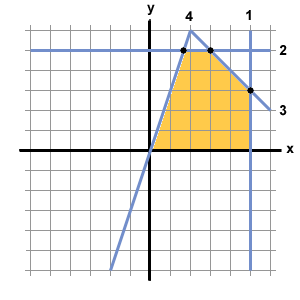Please wait while we process your payment
If you don't see it, please check your spam folder. Sometimes it can end up there.
If you don't see it, please check your spam folder. Sometimes it can end up there.
Please wait while we process your payment

By signing up you agree to our terms and privacy policy.
Don’t have an account? Subscribe now
Create Your Account
Sign up for your FREE 7-day trial
By signing up you agree to our terms and privacy policy.
Already have an account? Log in
Your Email
Choose Your Plan
Individual
Group Discount
Save over 50% with a SparkNotes PLUS Annual Plan!
 payment page
payment page
Purchasing SparkNotes PLUS for a group?
Get Annual Plans at a discount when you buy 2 or more!
Price
$24.99 $18.74 /subscription + tax
Subtotal $37.48 + tax
Save 25% on 2-49 accounts
Save 30% on 50-99 accounts
Want 100 or more? Contact us for a customized plan.
 payment page
payment page
Your Plan
Payment Details
Payment Summary
SparkNotes Plus
You'll be billed after your free trial ends.
7-Day Free Trial
Not Applicable
Renews July 16, 2025 July 9, 2025
Discounts (applied to next billing)
DUE NOW
US $0.00
SNPLUSROCKS20 | 20% Discount
This is not a valid promo code.
Discount Code (one code per order)
SparkNotes PLUS Annual Plan - Group Discount
Qty: 00
SparkNotes Plus subscription is $4.99/month or $24.99/year as selected above. The free trial period is the first 7 days of your subscription. TO CANCEL YOUR SUBSCRIPTION AND AVOID BEING CHARGED, YOU MUST CANCEL BEFORE THE END OF THE FREE TRIAL PERIOD. You may cancel your subscription on your Subscription and Billing page or contact Customer Support at custserv@bn.com. Your subscription will continue automatically once the free trial period is over. Free trial is available to new customers only.
Choose Your Plan
This site is protected by reCAPTCHA and the Google Privacy Policy and Terms of Service apply.
For the next 7 days, you'll have access to awesome PLUS stuff like AP English test prep, No Fear Shakespeare translations and audio, a note-taking tool, personalized dashboard, & much more!
You’ve successfully purchased a group discount. Your group members can use the joining link below to redeem their group membership. You'll also receive an email with the link.
Members will be prompted to log in or create an account to redeem their group membership.
Thanks for creating a SparkNotes account! Continue to start your free trial.
We're sorry, we could not create your account. SparkNotes PLUS is not available in your country. See what countries we’re in.
There was an error creating your account. Please check your payment details and try again.
Please wait while we process your payment

Your PLUS subscription has expired
Please wait while we process your payment
Please wait while we process your payment

Linear Programming
Solving systems of inequalities has an interesting application--it allows us to find the minimum and maximum values of quantities with multiple constraints.
First, assign a variable (x or y) to each quantity that is being solved for. Write an equation for the quantity that is being maximized or minimized (cost, profit, amount, etc.). This is that maximization or minimization equation. Next, write each constraint as an inequality. Number each inequality and graph the system, numbering each line on the graph as its corresponding inequality.
You should now have a shaded solution region with several "corners." Each corner is the intersection of two constraint inequalities. Find the coordinates of the corners by solving the systems of intersecting equations.
Plug the coordinates of the corners into the maximization/minimization equation. The coordinates that give the largest or smallest value for this equation (depending on what the problem is looking for) are the solution to the problem.
There are three quantities that we are often asked to maximize and minimize in linear programming problems. Revenue is the total amount of money taken in, cost is the total amount of money spent, and profit is the revenue minus the cost, or the total amount of money gained.
Example: Jimmy is baking cookies for a bake sale. He is making
chocolate chip and oatmeal raisin cookies. He gets 25 cents for each
chocolate chip cookie and 30 cents for each oatmeal raisin cookie. He
cannot make more than 500 cookies of each kind, and he cannot make more
than 800 cookies total. He must make at least one-third as many
chocolate chip cookies as oatmeal raisin cookies. How many of each kind
of cookie should he make to get the most money?
Variables:x = number of chocolate chip cookies (in
hundreds)
y = number of oatmeal raisin cookies (in hundreds)
Maximization equation: Profit = 25x + 30y
Constraints:
1.x≤5
2.y≤5
3.x + y≤8
4.x≥ y
y
Graph:

Corners:
1 and 3: x = 5, x + y = 8. (x, y) = (5, 3).Plug into maximization equation:
2 and 3: y = 5, x + y = 8. (x, y) = (3, 5).
2 and 4: y = 5, x =y. (x, y) = (
, 5).
(5, 3)âá’Profit = 25(5) + 30(3) = 215.
(3, 5)âá’Profit = 25(3) + 30(5) = 225.
(, 5)âá’Profit = 25(
) + 30(5) = 191.67.
Please wait while we process your payment

